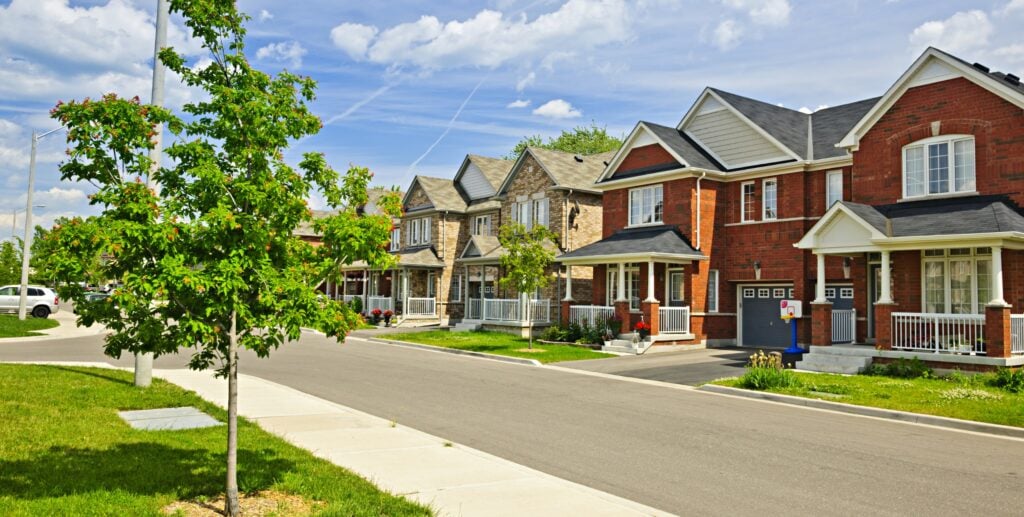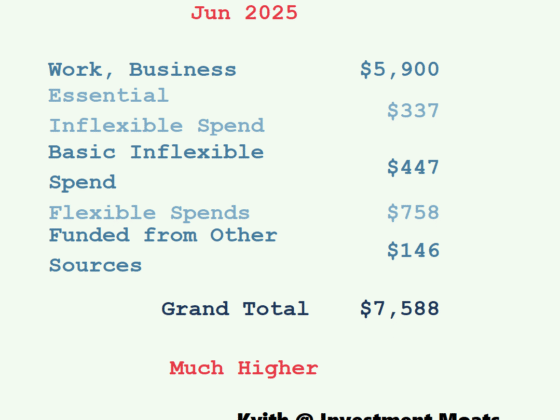You snooze, you lose: That’s the message real estate investors have adopted in the current housing market. While homebuyers are sitting on the fence, fretting about high interest rates and prices, investors have swooped in to dominate nearly a third of the market, according to property analytics firm Cotality.
However, these investors are not Wall Street behemoths, flapping their checkbooks like birds in flight. Rather, they are mostly mom-and-pop landlords intimately familiar with their local markets, scouring for deals. Cotality estimates that smaller investors make up 25% of the single-family owned market, while larger investors contribute 5%. The shift occurred as conventional homebuyers and larger investors applied the brakes, Cotality discovered.
Smaller Investors Move Quickly, While Larger Investors Pull Back
By smaller investors, Cotality refers to landlords with fewer than 100 doors. Unlike Wall Street corporations buying up vast swathes of homes or homebuyers worried about down payments and monthly expenses, smaller landlords can move quickly to close deals.
Part of the issue with larger investors has not only been concern about surging costs amid stubborn interest rates, but local and federal regulators making bulk buying of single-family homes more difficult. Conversely, according to Parcl Labs, large corporate investors like Invitation Homes, Progress Residential, and Amherst Residential are releasing rather than acquiring homes in major U.S. cities such as Atlanta, Dallas, Phoenix, Houston, and Charlotte.
“We’re acquiring at a fraction of what we were several years ago,” Chris Avallone, chief financial officer of Amherst, which owns around 46,000 homes, told the Wall Street Journal, blaming high interest rates for part of the slowdown.
Large Wall Street investment firms are not exiting single-family rental real estate entirely, but instead redeploying their funds into build-to-rent communities, which minimizes competition from other investors, Rick Sharga, CEO of CJ Patrick Co., a real estate advisory firm, told CNBC.
A Low-Risk Investment Strategy to Replicate
The Journal reports that small real estate private equity firm Stand Capital has devised an investment strategy that enables it to be more nimble in the current market compared to larger financial institutions: They target single-family homes that cost around $250,000. After making a $75,000 down payment and investing $15,000 in the property for light renovations, they then rent the property for $2,000 to $2,200 per month. After three years of 5% annual appreciation, they sell the home at a profit.
The advantage smaller investment firms feel they have over larger ones is less internal regulation and red tape, the Journal reports. They don’t have to report to outside shareholders or pension funds. Another advantage is that there is currently less competition, as conventional homebuyers are not active in the market, waiting for more favorable conditions. Additionally, mom-and-pop landlords or investment firms can make all-cash offers, avoiding the issue of high interest rates.
38% of National Homebuilders Lowered Their Prices in July
The Journal reports that the cozy relationship that formerly existed between homebuilders and national single-family residential companies, such as Invitation Homes, recently stalled due to the inventory pileup in Florida and Texas. In the rush to clear their books of the supply glut, this has allowed smaller investors the opportunity to buy homes at deep discounts. National homebuilders have issued what amounts to a fire sale, with 38% lowering their prices in July, numbers not seen since just after the pandemic, according to the NAHB/Wells Fargo Housing Market Index (HMI).
Regional Snapshots of Investor Ownership
The 30% investor ownership percentage quoted by Cotality is not uniform across the nation, but rather an overall figure. Examining the numbers regionally, the differences are marked.
California
According to the Guardian, approximately 19% of the homes in California are investor-owned. That number increases to 83% in mountainous areas like Sierra County. In major metropolitan areas, such as Los Angeles and San Francisco, the percentage is closer to 15% to 16%, contributing to the housing and affordability crisis in the state.
Interestingly, small investors who own fewer than five properties are the largest group in California, accounting for 85% of investor-owned homes in the state, according to the Guardian.
Large metro areas like San Francisco, San Jose, Sacramento, and Oakland have seen a net-positive investor impact, meaning investor sales are greater than regular homeowner purchases. This is compounded in other metros, where investor purchases have limited supply for owner-occupiers, thereby tightening the market, according to Realtor.com.
Florida and the Southeast
Investor activity has declined significantly in Florida’s major metropolitan markets, with Orlando, Miami, and West Palm Beach experiencing double-digit year-over-year declines in investor purchases. Orlando was down 27.5%, Miami 21.3%, and West Palm Beach 14.5%, according to brokerage and listings site Redfin.
Things couldn’t be more different in Memphis, TN, where investor buyers accounted for 23.6% of sales in 2024, with slight growth into 2025, according to Realtor.com.
In Georgia, overall investor activity has softened, although it remains elevated at 17.3%, according to Realtor.com. Senior economic research analyst Hannah Jones said of Georgia and other investor-heavy states such as Missouri, Oklahoma, Kansas, and Utah:
“Buying a home is still relatively affordable in these states, making them more hospitable for investors. Overall buyer activity has pulled back significantly as housing costs have climbed over the last few years. Investor activity has mirrored this pullback to some degree, but investors continue to find opportunities in low-priced markets with strong demand.”
Midwest and Ohio Region
The Midwest is starting to attract shifting investor interest, especially in Ohio. Columbus (15.9% investor share), Cincinnati (15.3%), and Cleveland (15.4%) saw significant upticks in investor buyer share in 2024, according to Realtor.com.
New York and the Northeast
It remains to be seen what effect the forthcoming mayoral election will have on New York City real estate. However, Realtor.com reports that in the New York-Newark-Jersey City metro area, investors had a net-negative impact of -4.4% in 2024, meaning investor buyers exceeded sellers, thereby constricting supply for traditional buyers.
As of mid-2025, the Manchester-Nashua, NH market ranks as one of the hottest homebuyer and investor regions in the country, according to the Wall Street Journal and Realtor.com’s Summer 2025 Housing Market Ranking. It’s not cheap, however. The median sales price of $599,900 as of June means that tenants and owners are higher earners, supported by a strong employer base, and are exempt from state income tax in New Hampshire. There is intense competition for investment real estate here.
Final Thoughts
There is a strategy for every market, most of which is determined by an investor’s risk tolerance and liquidity. With high interest rates and prices, having the option to buy with all cash and select a market where prices are still appreciating clearly makes sense.
However, in other markets where prices are falling, timing is everything. If history has taught us anything about real estate, it is that inevitably, prices and rents will continue to rise. Thus, strategizing how to continue buying and securing sensible deals to take advantage of the would-be buyers currently sitting things out, thereby lessening competition, is a worthwhile long-term approach.
A Real Estate Conference Built Differently
October 5-7, 2025 | Caesars Palace, Las Vegas
For three powerful days, engage with elite real estate investors actively building wealth now. No theory. No outdated advice. No empty promises—just proven tactics from investors closing deals today. Every speaker delivers actionable strategies you can implement immediately.












